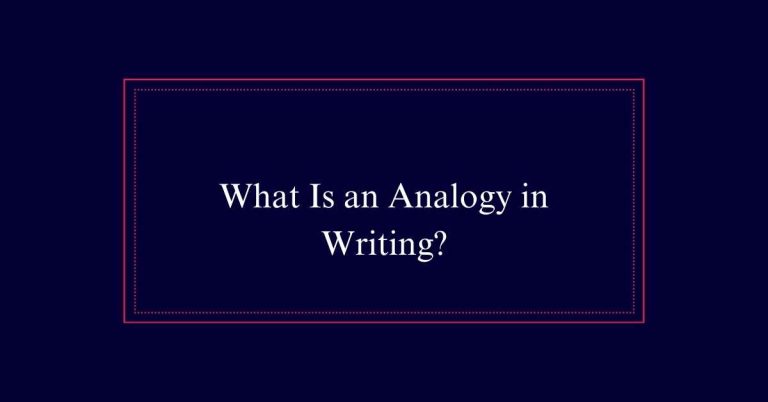Ampersand: Definition and Examples
The ampersand, denoted by the symbol ‘&’, stands for the word ‘and’ in English. It originated in the Roman Empire as a ligature for “et” and has been used ever since. Today, it’s common in company names, book titles, and everyday writing for its efficiency and brevity. Examples include “Johnson & Johnson” and “Harry Potter & the Sorcerer’s Stone”.
What Is an Ampersand?
An ampersand is a symbol in English that represents the word ‘and’. It is written as ‘&’ and is commonly used in various contexts.
You often see it in company names, artistic titles, and informal writing. For example, in company names like Johnson & Johnson or movie titles like “Troy & Abed in the Morning.”
It is also popular in text messages, social media, and online posts, especially where character limits are a concern. The ampersand helps save space and keeps messages concise. However, its usage is mostly informal.
Historical Origins
The ampersand originated in the Roman Empire as a ligature for the Latin word ‘et’. The symbol was created by combining the letters ‘e’ and ‘t’ into a single character. This practice made writing faster and more efficient for scribes.
Over time, the ampersand became widely used in Roman texts. Its adoption continued through the Middle Ages, where it appeared in various manuscripts and documents. The symbol’s practical utility guaranteed its survival across different eras.
Evolution in English
Following its reintroduction in the late 1700s, the ampersand evolved greatly in English usage. It found its way into various forms of writing, both formal and informal. By the early 1800s, it was even considered the 27th letter of the alphabet. Over time, its use has expanded and adapted.
Here are four key ways the ampersand has impacted English:
- Enhanced readability: Simplifies sentences by connecting words efficiently.
- Cultural significance: Appears in artistic titles, conveying creativity and modernity.
- Practicality: Saves space in text messages, social media, and headlines.
- Symbolic value: Represents partnership and unity in various contexts.
Usage in Company Names
In company names, the ampersand often signifies collaboration and joint ventures. This symbol is commonly used to represent partnerships or combined efforts between individuals or entities.

For example, well-known companies like Johnson & Johnson and Procter & Gamble use the ampersand to highlight the union of different founders or business units. The ampersand can also make company names shorter and easier to remember. It replaces the word ‘and,’ which saves space and creates a more streamlined appearance.
Additionally, the ampersand adds a formal yet approachable touch to the company’s brand identity. Businesses often choose the ampersand to convey a sense of unity and cooperation, essential qualities in any successful venture.
Movies and Books
Ampersands frequently appear in the titles of movies and books to create a concise and visually appealing format. This symbol can make titles shorter and more memorable. Here are some well-known examples that evoke emotion:
- ‘Harry Potter & the Sorcerer’s Stone’ – This title captures the magical adventure awaiting readers.
- ‘Romeo & Juliet’ – Shakespeare’s timeless tale of love and tragedy.
- ‘Mr. & Mrs. Smith’ – A playful title hinting at the dynamic relationship between the main characters.
- ‘War & Peace’ – Tolstoy’s epic novel portraying the vast spectrum of human experience.
Informal Writing
While ampersands add flair to titles, they also play a significant role in informal writing. The symbol is especially useful in text messages, social media posts, and online communications where brevity is key. It saves space and keeps messages concise.
Ampersands are often seen in personal emails and casual notes between friends. They simplify sentences, making them quicker to read and write. However, it is important to avoid overuse, which can make text look cluttered. Use them sparingly for clarity and impact.
Though they are fitting for informal contexts, ampersands should be avoided in formal writing to maintain professionalism. In summary, the ampersand is a versatile tool for informal communications, enhancing readability and efficiency.
APA Citation Rules
The ampersand is mandatory in APA citations when listing multiple authors. It helps to maintain space and keep the citation concise.
When citing sources in APA format, follow these rules:
- In-text citations: Use the ampersand between authors’ names, e.g., (Smith & Jones, 2020).
- Reference list: Use the ampersand for up to 20 authors, e.g., Smith, J., Jones, A., & Brown, L.
- Multiple authors: For more than one author, the ampersand connects the final two names.
- Publication years: Combine with publication year in parentheses, e.g., (Smith & Jones, 2020).
Formal Writing Guidelines
In formal writing, the use of the ampersand should typically be avoided except in official titles or specific contexts. This symbol is seen as informal and can detract from the professionalism of the text.
Instead, spell out the word ‘and’ to maintain formality. The ampersand may be appropriate in company names, book titles, or legal documents where it is part of a proper noun.
When writing formal papers, reports, or business correspondence, adhere to this guideline. Consistency is key; using the ampersand in one part of a document but not in another can appear unprofessional.
Oxford Comma Considerations
Proper usage of the Oxford comma requires careful consideration, especially when deciding whether to include an ampersand. The Oxford comma, placed before the conjunction in a list, can clarify meaning.
However, when combined with an ampersand, it often looks awkward and redundant. Here are four reasons to avoid using an ampersand with the Oxford comma:
- Visual Clarity: The ampersand may create visual confusion in a list.
- Redundancy: The comma and ampersand together can feel repetitive.
- Formality: Formal writing typically does not use ampersands.
- Consistency: Maintaining a consistent style is easier without mixing symbols.
Spacing Rules
Adhering to proper spacing rules guarantees clarity and readability when using the ampersand in writing. In general text, place a space before and after the ampersand to make sure it stands out clearly.
For example, write ‘cats & dogs’ rather than ‘cats&dogs.’ However, when using the ampersand in official titles or company names, follow the specific spacing conventions used in those names.
For instance, ‘Procter & Gamble’ uses a space, while ‘AT&T’ does not. Consistency is key in maintaining a professional appearance.







